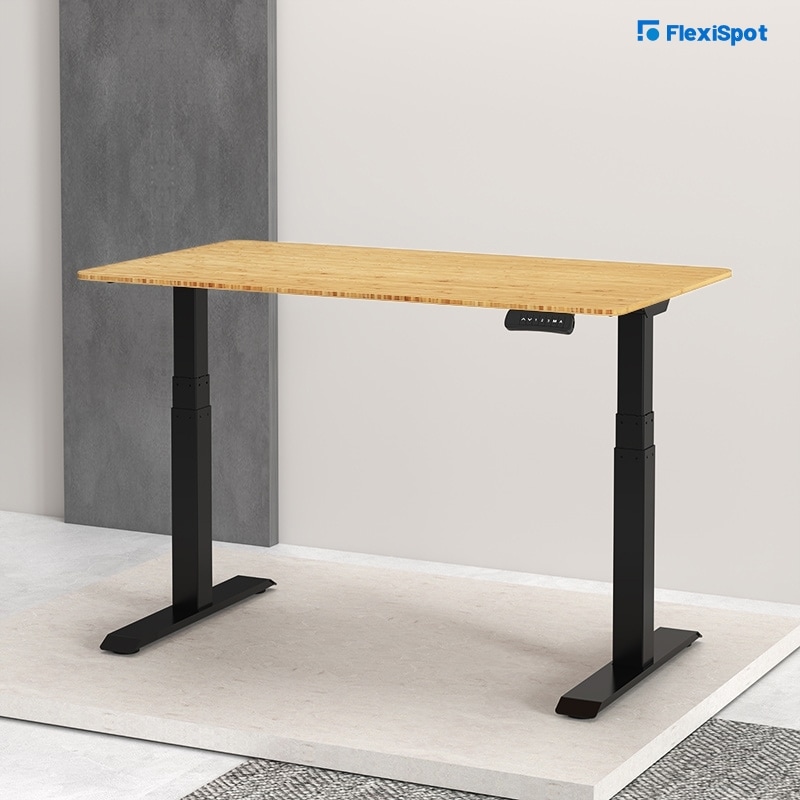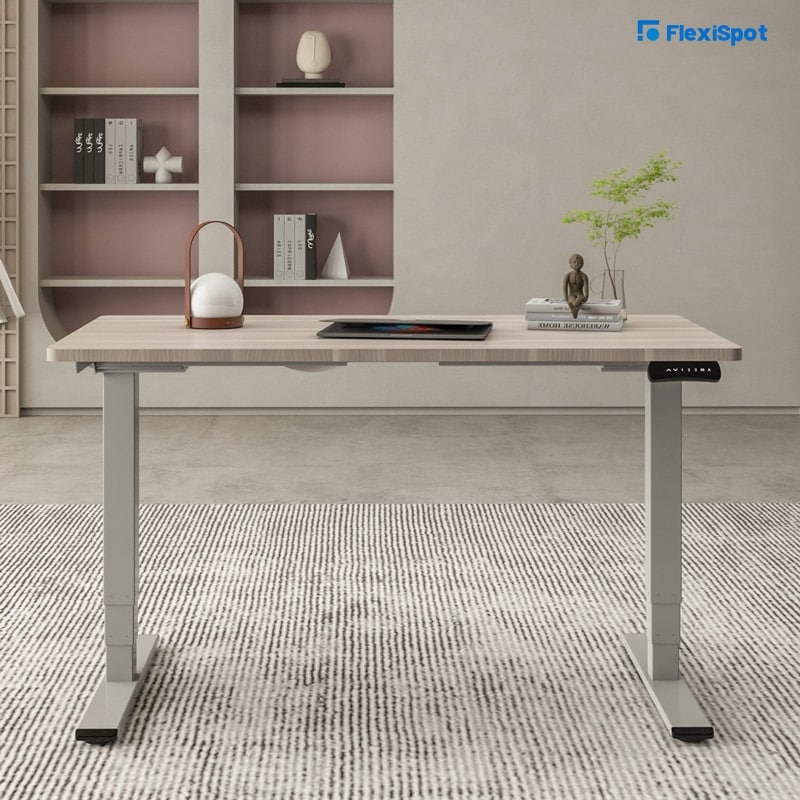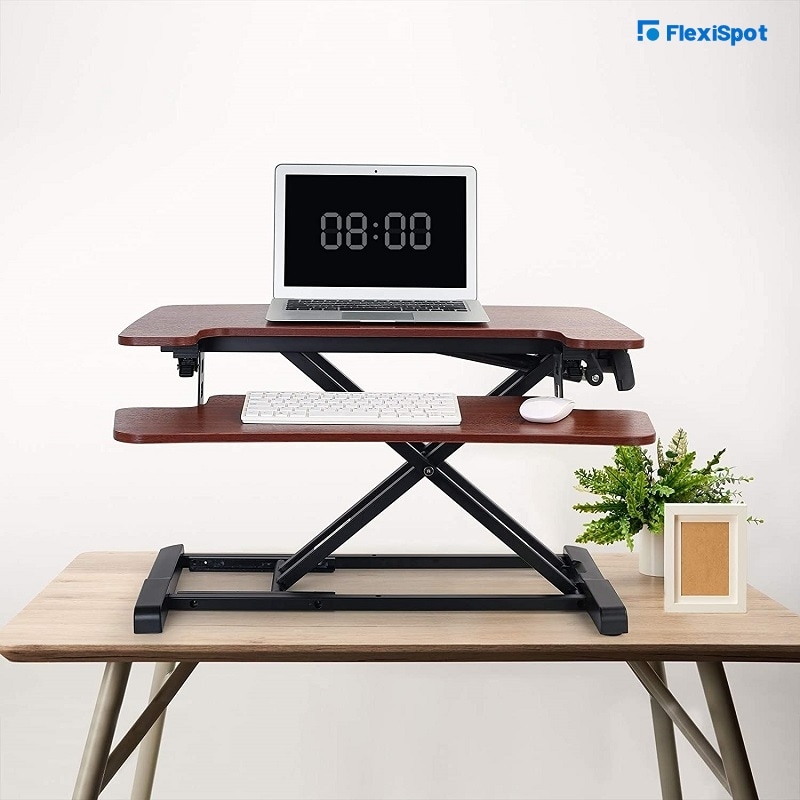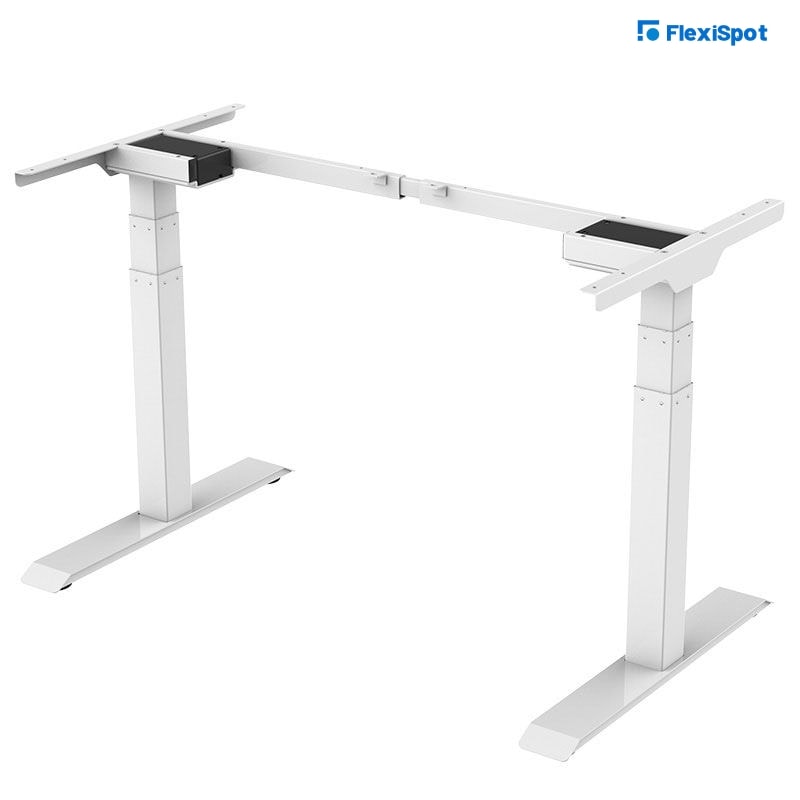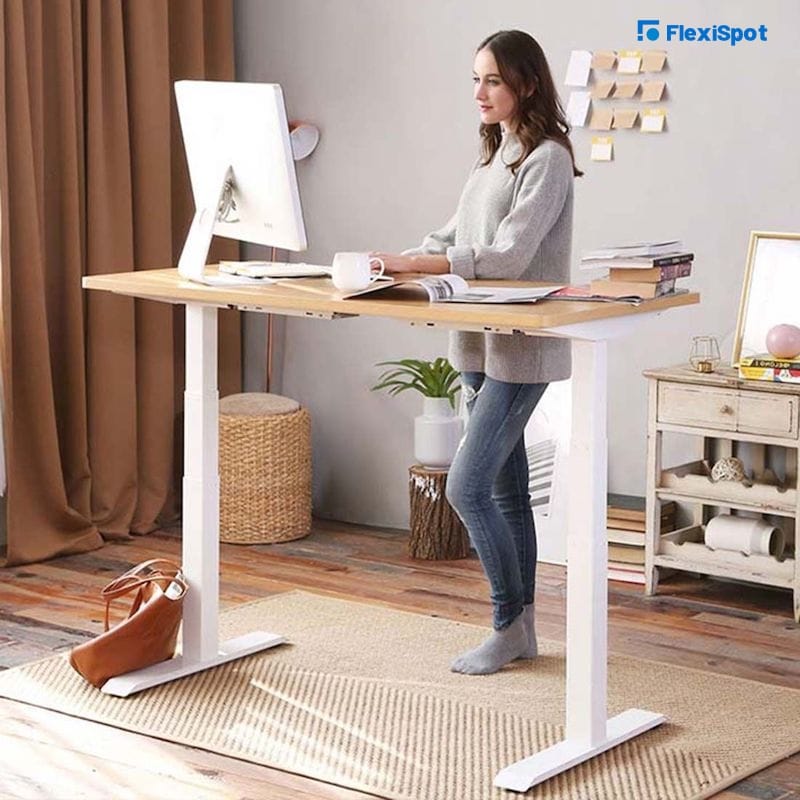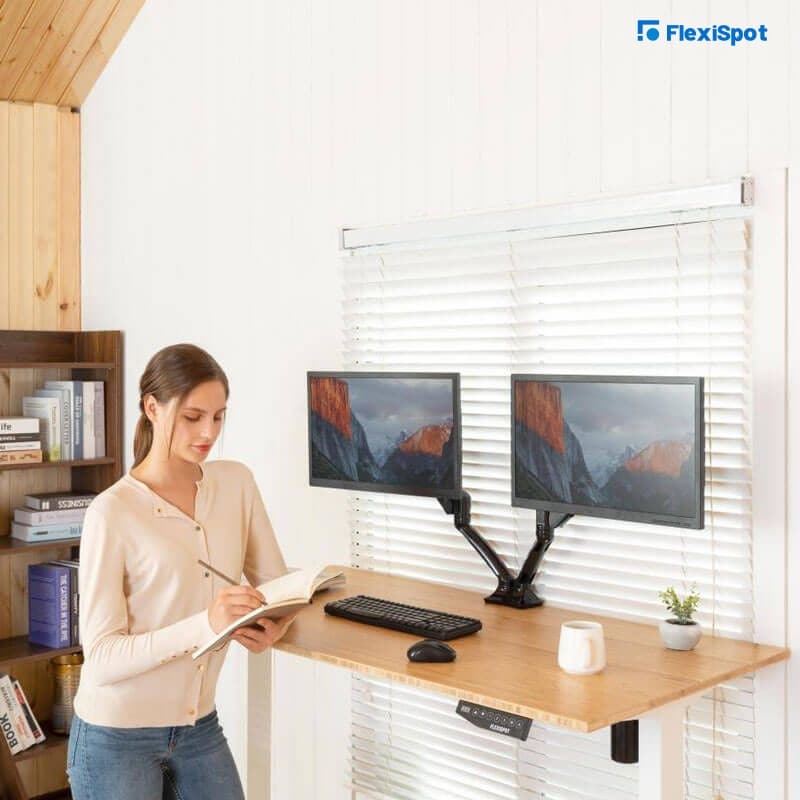Do you spend hours at a time sitting at your desk? Chances are, you're not getting enough exercise, and you could be doing long-term damage to your health. There’s a solution for that: A standing desk. This furniture solution allows you to incorporate intermittent sitting and standing as you work. Regular periods of standing as you work can help you improve your posture and burn more calories throughout the day.
But you’re probably thinking, “Standing desks come with a cost implication.” Well, that doesn’t have to be the case. Have you ever considered making your own standing desk? It's easier than you think! In this blog post, we’ll show you how to make a DIY standing desk using materials that you probably already have lying around the house. It's a great way to save money, and it can be really fun to customize your workspace. Without any further ado, let's get started!
Why Build Your Own Standing Desk?
There are many reasons to build your own standing desk. Let’s look at a few:
Perhaps the most important reason is that you can customize it exactly to your needs. You can choose the height, width, and depth perfect for you.
You get to ensure that your desk is perfectly stable and safe.
Another reason to build your own standing desk is that it can be much cheaper than buying a commercial desk. You can use recycled materials or materials that you already have on hand, so there is no added cost. And if you do need to buy some materials, they are likely to be much less expensive than a commercial desk.
It's a fun project to do with your friends or family.
The satisfaction of building something yourself with your own hands. There's just something special about being able to look at something you created and say, "I made that."
What Should You Consider Before Building Your Standing Desk?
There are a few things you'll want to consider when designing your own standing desk:
Cost of Materials.
Building a hybrid workstation is not easy, but the results are worth it. You get to DIY a workstation that suits your style, decor, and needs. But there are a lot of factors to consider when making a DIY standing desk, not the least of which is the cost of materials. Depending on the type of materials you choose, your desk could end up costing anywhere from $50 to $200 or more. But it's not the only consideration. You also need to factor in the cost of your time and the cost of tools.
Here are some tips on how to keep the cost of materials down:
Use scrap lumber or recycled material whenever possible.
Look for deals at your local hardware store or lumber yard. Keep in mind that the cheaper the materials, the more likely it is that the desk will not be as sturdy or adjustable as you'd like.
Shop around online for better prices on materials and hardware.
Make sure you have all the tools you need before starting your project. This will help avoid costly trips to the tool rental store.
Height Adjustment.
It’s important to consider the transition between standing and sitting. It is unsustainable for you to be standing or sitting all day therefore, you need a desk that can accommodate both. Whatever solution you implement, ensure that it takes the least time and effort to transition.
Ergonomics.
The companies that make standing desks put a lot of research into understanding ergonomics in order to build desks that provide both comfort and improve efficiency. When building your own desk, it’s essential to brush up on this as well. Take time to understand the provisions of the desk you are creating and draw up plans that accommodate the different pain points.
Consider Your Ideal Desk Height
Your new desk should have two ideal heights: optimal standing and sitting height. The perfect height ensures that you are comfortable and helps you maintain a good posture. Your perfect desk standing height should allow your elbows to rest at a 90-degree angle when placed on the desk. On the other hand (no pun intended), your ideal seated position should allow your feet to rest on the ground and your elbows on the chair’s arm at the same level as your wrists on the table.
Skills
When making a fully DIY standing desk, you'll want to consider the following skills:
Ability to use power tools
Ability to measure and cut wood accurately
Knowledge of carpentry and/or furniture assembly
If you don't have all of these skills yourself, don't worry - there are plenty of tutorials online that can show you how to do each step properly. With a little bit of practice, you'll be able to create your ideal standing desk.
Design Ideas for Building Your Own Standing Desk
There are a lot of different ways to build your own standing desk, and the best design for you will depend on your personal preferences and needs. Here are a few ideas to get you started:
Raising Your Current Desk.
Adding Supports to the Table Legs
You can add wooden or metallic supports to your table legs to reinforce them and raise your desk surface. Do your research to ensure that the supports can hold the weight of your table and its contents, and ensure that it lies evenly on the surface for stability. This works better for a non-adjustable desk station.
Adding a Drawer or Stool
Place either a drawer or a stool on top of your desk to make a standing desk. Ensure they are both stable to avoid any discomfort. Make sure that the height of the stool matches an ergonomic position for your eye level and arms while working.
Adding a Coffee Table on Top
You can place a coffee table with roughly the same or smaller dimensions as your desk on top to raise it. It’s easy enough to do, and you can always take down the coffee table whenever you want to switch to a seated position. This option gives you enough desktop real estate for your other work tools as well.
Improvise With Things Around the House
Use materials around your house to raise your desk such as a wooden box or a stack of large books. A pile of books is easily adjustable to achieve your desired height. You could also repurpose rigid/setup boxes from your holiday or birthday gifts, especially the good-quality ones that come with luxury items (if you're lucky enough).
Adjust a Dresser to Fit Your Needs.
Most homes have old pieces of furniture lying in wait to get repurposed someday.
Dressers, nightstands, nesting stools are some of the major culprits. Get boards, wooden blocks, and pieces of plywood to adjust the furniture item to your preferred height and desktop surface dimensions.
Dressers are usually designed to allow a comfortable sitting position as you go about your skincare rituals. They come with the added advantage of having drawers for your extra office supplies. You can attach wooden legs to a plywood top that can permanently or detachably rest on top of the dresser when you need to stand and retain the dresser top for your seated position.
Reimagine Your Bookshelf.
This is another low-cost solution. You don’t need to build or assemble anything. It’s clever and practical. All you need to do is remove a few shelves to accommodate your height preference and the vertical space occupied by your laptop or computer. Also, be mindful of the bookshelf depth as it contributes to your PC’s or laptop’s stability. Use a book to prop the computer if the shelf falls short of the optimal height.
Wall-Mounted Standing Desks.
You can mount a wooden pallet on the wall as a floating desk. This design saves space and can be customized to tie in with your decor. Wooden pallets are relatively cheap and easy to come by. The setup cost is also lower than some of the other options because you will be leveraging the pallet’s weight against the wall. You can use any other wooden material depending on your budget.
Using a Standing Desk Converter
A standing desk converter is a great way to convert your current desk into a standing desk. All you need to do is set it on top of your desk, and it will raise your computer or keyboard to the correct height so you can stand while you work. Pick a Standing Desk Converter based on the adjustability you need. Some offer a range of height settings, while others provide a fixed height.
To get started, measure the height of your current desk and then purchase a standing desk converter that will raise your equipment to the height you require. The good thing is that there are a lot of different brands and models of standing desk converters on the market, so you are guaranteed to get one that best suits your needs.
Buy a Frame and DIY the Table Top.
Rather than take a whole woodwork course or make several trips to the hardware store, you can buy a standing desk frame, slap on a tabletop and you’re done. Much like purchasing a ready-to-assemble standing desk, frames allow you to customize your functionality to your needs. However, before buying one considers the load capacity, the motor lifting speed, height range, material, cost, advanced functionality, etc.
Buying a frame cuts down on time it would have taken you to build a whole piece while also giving you the ergonomic benefits of an adjustable standing desk. There are a variety of options to choose from based on your needs. This option works best if you already have a desktop available or a desktop DIY idea.
DIY Treadmill Standing Desk
For this design, all you need is a sturdy platform or tabletop that will fit on the treadmill handrail for your laptop. Once you have the platform, just set it on the treadmill’s handrails and secure it in place. It's essential to ensure that the platform is stable and won't move around when you're typing or working. You can always slide a workout in during work as the primary benefit.
Permanent Tall Desk with Height Adjustable Chairs such as Drafting Chairs
With this solution, there’s no adjustment required for the table. The tall desk is fixed, and all you have to do is get a drafting chair that also goes with your regular desk. This solution offers the benefits of a hybrid workstation while requiring little to no adjustment after setup.
Engineer Your Own Standing Desk
Engineering your own desk requires you to put in time, money, and commitment. It’s a worthwhile endeavor because it allows you to design a desk that suits your needs. However, to do this, you will need;
- Strap Clamp
- Table Saw
- Wood Finish
- Power Drill
- Screwdriver
- Hammer
- Plywood or other sheet material for the desktop
- Tape measure or ruler
- High-quality wood glue
- Staples gun and staples
- Paint, sealant, or varnish of your choice (optional)
- corner braces (with screws, not nails)
- furniture caster wheels(For Moving Desk)
- High-grit Sandpaper
- Paintbrush
- Screws and Nails
- Leveler
Once you have these essential tools, you need to take measurements. Figure out the length and width you want for your standing desk against the space that you have available. If you get the measurements wrong, your desk could wind up being too short or too tall.
Settle on a design that you like and try to DIY your desk. Be keen when taking the height measurements. Consider whether you want to use an ergonomic chair with your desk and adjust your width measurements accordingly. Needless to say, this is a crucial part of the process.
The materials you need will be dictated by the type of desk you want to build. Choose a frame that suits you best and strong solid material such as hardwood for your base. Alternatively, you can skip some steps and purchase a frame to help build your standing desk.
This clip shows how to build a standing desk from scratch
https://www.youtube.com/watch?v=GiV_JJyvJzY&ab_channel=EXOcontralto
If you prefer a mobile desk, here’s a clip showing how to build a mobile standing desk:
https://www.youtube.com/watch?v=W45_92BlbLo&t=59s&ab_channel=DIYCreators
The Advantages of a DIY Standing Desk
There are many advantages of having a DIY standing desk. A few key benefits include:
- Standing lowers your susceptibility to the health risks that come with a sedentary lifestyle such as obesity and cardiovascular disease.
- Using a standing desk improves your efficiency and productivity.
- It’s good for your posture and reduces back pain.
- It helps boost your energy levels and improves your mood.
- It's much cheaper to make your own. You can use materials you already have on hand, or find them for a fraction of the cost of a commercial standing desk.
- A homemade standing desk can be tailored to fit your specific needs and preferences. You can choose the height that's best for you, select the type of materials and finishes you like, and add any extra features you want.
- Building your own standing desk is a fun DIY project that can help you learn more about woodworking and furniture construction.
- Taking this project on allows you to exercise your creativity. There are several designs online to choose from that can fit your budget.
- Since you choose the materials, you get to decide how sturdy and dependable your desk will be.
- You get the satisfaction of building something with your bare hands.
The Disadvantages of a DIY Standing Desk
There are a few potential disadvantages to using a DIY standing desk:
- Standing all day has its own health risks like fatigue and lower back pain.
- Consider the time and effort you need to invest in it.
- Depending on their quality, it could still be costly to get the materials you need. Not to mention an electric standing desk increases cost in terms of electricity.
- It could get frustrating for first-time DIYers or people with no woodwork experience.
- If you're looking for a quick and easy way to make your own standing desk, you may not have the time or patience to do all the research on what type of materials and design will work best for you, or to measure and drill holes into your desk. You may also not have access to all the tools required to make a sturdy standing desk.
- If you don't build your desk correctly, you could end up with back pain or other health problems.
- You may not have enough space for a full-size standing desk.
- If you don't have the proper tools or skills, your DIY desk may not be as sturdy or comfortable as a store-bought model.
Is it Cheaper to Build Your Own Standing Desk?
It depends on the materials you use and the type of desk you build. There are many different types of DIY standing desks that can be built using various materials. Some are simple designs that can be made with plywood or other inexpensive materials, while others are more complex and require more time and skill to build.
At the same time, there are more affordable commercial standing desks on the market, including this manual version that lacks the bells and whistles but serves the purpose efficiently. Additionally, commercial versions come with a warranty, which saves on repair costs and gives the user some form of guarantee on quality.
Be sure to factor in all the costs (including time, longevity, etc.,) when calculating how much your DIY desk will cost. If you're not too handy with tools or don't have the time or inclination to build your own desk, plenty of excellent commercial options are available.
How Tall Should My DIY Standing Desk Be?
Based on standard ergonomic principles, you should measure your desk to suit you while both in standing and sitting positions. The height of your standing desk is dictated by your height. If you're short, the desk should be lower, and if you're tall, the desk should be higher.
Your DIY standing desk should reach the height of your elbow when your arm is hanging straight down by your side.
Conclusion
So, there you have it! If you're looking for a way to avoid sitting all day, or if you just want to add a little extra challenge to your workday, making your own standing desk is a great option. With just a few simple materials and tools, you can have a custom-made desk that's perfect for your needs. Make your work easier by considering a standing desk frame or getting yourself a standing desk converter. So what are you waiting for? Get started on your new standing desk today!

